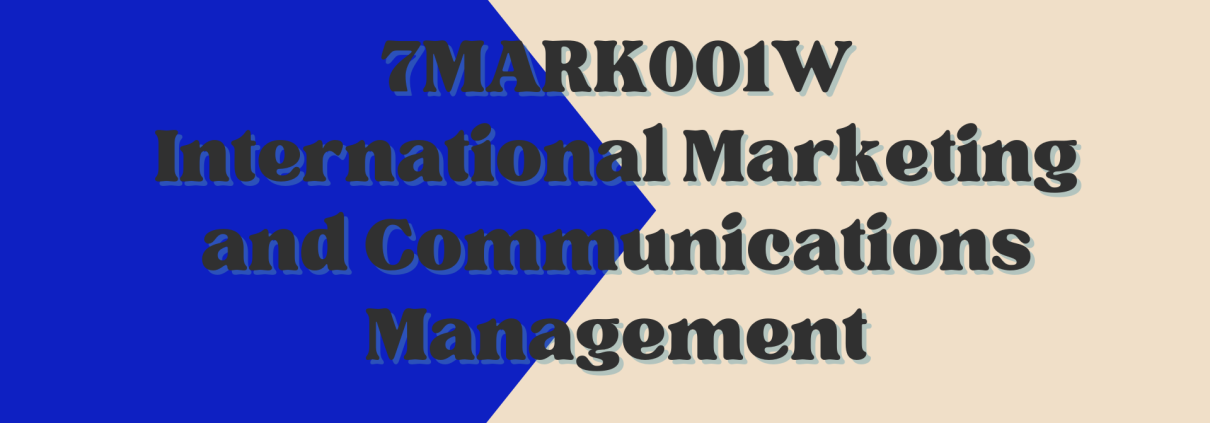Introduction:
Supply chain management can be regarded as the strategic and strategic coordination of the conventional functions of the business and the tactics across the functions of the business that are included in any company and all along the business within the supply chain that is meant for the development of the long-term productivity of the business organizations including the supply chain as a whole.
The supply chain management of Tesco addresses the following issues such as the configuration of the distribution network which is like the cross docks and distribution centre. It also includes the management of the inventory of Tesco which includes the management of raw materials, quantity, and location of the inventory (Brandenburg, et al., 2014). The supply chain management of Tesco also includes the information process which relates to the supply chain in forecasting the inventory.
The strategy of distribution includes the control of the transportation and the pool point shipping along with the cash flow according to the payment terms and methodologies. Tesco has developed to become one of the largest supermarket chains in the world. The brand has set its vision on becoming the Toyota of the business of grocery by including the use of the latest technology of RFID and lean management (Christopher, 2016). Tesco has gained an advantage over its global competitors by the incorporation of innovation which is in the orientation of the supply chain such as sales data. The company incorporates the continuous replenishment that is triggered by the demand for the customers and primary distribution.
Being appointed as the procurement and supply chain analyst for Tesco, the challenges and opportunities in the company had to be analyzed for the improvement in the end-to-end supply chain management programs to safeguard the long-term success of the company. Thus, the end-to-end procurement and the supply chain analysis and mapping have to be done.
PART-A:
The supply chain management and logistics of Tesco come into play while dealing with groceries and Fast Moving Consumer Goods. The supply chain as an entire process ranges from the basic FMCG commodities to selling the end product to the end customer in a cycle. Serving the needs of the end customers is a top priority for the management of Tesco as the degree to which the customers are satisfied is the great factor that leads to the success of Tesco in the global market (Fawcett, Ellram & Ogden, 2014).
A typical supply chain of Tesco is formed from the five links. Milk and milk products are included among the FMCG products that Tesco provides to its customers. Milk is produced by any dairy cooperative which is then shipped to a factory that manufactures cheese. After the cheese is manufactured, then it is shipped to the national distribution center of the manufacturer where the cheese is stored and left for maturation for around nine months (Mangan & Lalwani, 2016).
Then the products are shipped to the retailer and transported to the regional distribution center of the retailer. From there, the products are shipped to Tesco’s stores. The long-term partner of Tesco, Hilton which is a meat supplier has now strengthened its ties which are providing facilitation of significant investments in major sites and the confidence to invest in new countries.
According to Monczka, et al, the supply market for Tesco is penetrated with the objective of the growth of opportunity which involves the realization of the development of the efforts that are directed in the orientation of the existing customers that use the present format of retailing of Tesco. These opportunities include devising of the approaches which get the existing customers to visit the stores of Tesco most of the time and attracting the consumers from the prevalent target market who do not prefer the retailer to buy more products on each visit. The approach regarding the supply market of Tesco also includes opening more stores in the market which is targeted and exists for a longer duration (Monczka, et al., 2015).
Other approaches of Tesco include displaying FMCG Products to increase impulse purchases and providing training to the salespersons to cross-sell. Sourcing of FMCG is very crucial for the retailers like Tesco because various issues arise in the supply chain management in the sourcing sector of the retailer. However, the issues in the sourcing are static situations as the competencies and countries along with the costs continue to shift and alter. One response to the development of international sourcing is the utilization of logistics service providers (Pagell & Shevchenko, 2014).
As per Stadtler, Tesco selects its suppliers based on their capabilities and not entirely on the process of the competitive process. The current trend in the selection of the suppliers of Tesco is to minimize the supplier base of the brand. The suppliers are evaluated and analyzed by TESCO to select the suppliers who would outperform the competition continually. Tesco has a team of strategically involved analytical managers who regulate the important inputs to the process of production (Stadtler, 2015). More power is given to professional purchasing managers as Tesco realizes the importance and value of the capabilities of the suppliers. The selection of the suppliers is done by specifying the attributes of the product, the expected requirements of the forecasting, and ensuring the appropriate quality at a reasonable price.
The challenges that are related to the supply are many as the management of the retail supply chain as the transformation of the operations and the dominance of Tesco in the supply chains is very complex. The ability to make deliveries that are of the end–to–end capability through partnerships is a major challenge (Wisner, Tan & Leong, 2014).
The availability of the products at the service and the cost levels that are acceptable is already an important issue sort Tesco. Another challenge for Tesco is to execute multichannel operations effectively. The lack of flexibility is another challenge that Tesco faces in its supply chain management. There are many opportunities for Tesco including the expansion of the company into digital entertainment. Tesco can also offer its tablets and smartphones of its brands which can intersect with the company’s investment in foreign markets. The provision for online shopping can provide great flexibility to customers who have constraints regarding timing.
Part B Operational Issues
- The market that has been selected to provide the marketing of this large retail chain in the global environment in Australia. The Australian market is quite welcoming for any kind of business expansion. The reason behind it most of the circumstances can be satisfied from the perspective of political, economic, and social. The socio-cultural status of the country will be quite active in carrying out the sales. In addition to that Tesco specifically, targets the middle-up class people within the Australian Population.
- It is well known that Tesco is one of the multinational retail brands that has been operating all over the global market. In that context, there have been the specifications of the supply market which will provide the details about the supply planning. As per Stadtler, the supply planning of Tesco in the Australian market includes overall supply planning, distribution requirements, master production planning, and production scheduling. Tesco has the amount of 1000 suppliers with whom they carry out the business process since initiation. The supply market is therefore quite committed to the views of the customers and based on that suppliers access the data for the sales of their products (Stadtler, 2015).
Other than that the suppliers go with the processing by which they become part of an anonymous survey known as a viewpoint by which the supply market of Tesco can be able to know the thinking of the suppliers and accordingly bring improvisation to the business processes.
- Inventory management is supposed to provide the details of the base stock as well as the safety stock present within the organization. In that context, the base stock is the specific part that helps in the replenishment after it has been sold to customers. Similarly, the second portion provides the detail that gives protection against the impact created by uncertainty. Thus inventory management is the intrinsic part of the business in which Tesco plans for the implementation of the Power Big Data with Automated Data Collection Software which helps the company to put an insight over all the processes at every point of the supply chain. These tools will fulfill every responsibility which has to be completed as per the consumer demands.
- The challenge that the inventory management of Tesco faced is the rise of e-commerce which led to a high amount of speculation carried out in the B2C channel. Similarly, challenges are also faced in the processing of the B2B channeling due to the complexity of transactions along with the greater adoption of technology by the businesses as compared to that of the consumers (Pagell & Shevchenko, 2014). Inventory management also faces issues at a time when there will be a rise and fall in internet customers.
Part C Information issues
- It is known that the bullwhip effect describes any kind of specific occurrence detected by the supply chain processes concerning the situation in which the orders are beings sent to the supplier as well as the manufacturer and create a large amount of variance while continuing sales to the customers. The creation of this variance affects the smoothness of the supply chain and eventually, the product demand faces huge fluctuations. Thus the causes of a bullwhip in Tesco are disorganization, free return policies, price variations, demand information, order batching, and lack of communication. The remedies are carried with providing smooth communication between the employees. In addition, there should be regular order placement which will help in reducing the variations. Some modifications in the free return, policies will also help in the rise of the orders (Stadtler, 2015).
- It is seen that the supply chain of Tesco makes use of four technologies which will help them in saving their reputation on the global market. Thus these four technologies will specifically streamline the supply chain along with the optimization of productivity. Thus the four tools are Radio Frequency Identification (RFID), Computerised Shipping and Tracking, the Use of Social Media to Streamline the Supply Chain, and the Simplification of the Supply Chain (Fawcett, Ellram & Ogden, 2014).
RFID provides the reduction of potential errors along with the reduction of operational costs. In addition, it provides computerized product management. Similarly, the use of social media in streamlining the supply chain provides the utilization of cost-effective and time-efficient marketing strategies. The reason behind it is that social media helps in easy interaction with customers along with automated updates about the company’s inventory.
- Tesco is one of the worldwide retail sectors which encompass collaborative action of the supply chain processes that will provide the details of the relationships between the suppliers and customers. For that reason supply chain basically, enhance profitability like the enhancement of revenue or margin or process improvement, or cost reduction (Brandenburg, et al., 2014). Out of all these, the vital process is cost reduction which involves the decrease of the amount in shortage quantity, making the optimization of the merchandisers, making the reduction of the returns which will enhance distribution efficiency. This eventually will improvise the efficiency of the products by making improvisation of the supply chain improvements.
Part D Integration issues
- The comprehensive map of the supply chain of Tesco provides the detailed effects of the integration of the supply chain on the retailers. This process, therefore, starts from the private label development then the marketing, the buying, afterward it is logistics then it is of physical distribution, and finally the store operations. The map includes the vital functions of the supply chain development time, production information and transaction costs, stock reduction, promotion planning, transport planning, and stock value assessment.
- Integration is again one of the crucial processes of the supply chain that focus on the highest potential returns on investments. Thus it needs the proper implementation of the strategies to provide a detailed analysis of the supply chain of various segments of the business (Fawcett, Ellram & Ogden, 2014). The framework by Tesco majorly deals with the processes based on various guidelines.
- Sustainability supply chain management from economy and environment point of view
- Sustainability from society and environmental point of view
- Sustainability from society and economy point of view
- Manufacturing supply chain framework
- Service sustainability supply chain framework
- Development of the service chain supply framework
- Sustainability features of the service supply chain
- Sustainable service supply chain based on TBL
- Framework of SCM
- This portion will provide the details of the assessments that can provide the details of the analysis of Tripple A, i.e….., agility, adaptability, and alignment. As per the evident sources, the ability is the factor that will ensure the details of the dramatic changes that occurred within the organization. In that process, the capacity of buffers is increased which Tesco brings the implementation of new opportunities (Pagell & Shevchenko, 2014). Next, to that, the ability is the factor that specifically is dependent upon the information speed and by that manner which describes the information flow within the supply chain. Similarly, alignment is also the process that brings improvement within the coordination among the partners of the supply chain.
Part E-Sustainability Issues
- To bring sustainability within the organization the organization uses some specific steps which usually will result in the management as well as the improvisation of the environmental, social, and economic performance. Thus the practices involved in this process are mapping the supply chain, expecting the communication, Supplier performance in the baseline, developing efficient training as well as capacity building programs, driving performance improvement, and finally joining the industry collaboration (Brandenburg, et al., 2014). This can add up to more by having a more mature supplier sustainability program system. It can, therefore, be considered that there should be the expansion of the sustainability goals beyond any kind of direct operations, encouraging innovation, and integration of the supply chain sustainability criteria within the procurement process.
- Supply chain management can be considered as the basic necessity of business development that will help the company in gaining a competitive advantage. Thus it is seen that it will bring revolution in the development of supply chain integration as well as synchronization. Moreover, the process also deals with the communication process with the customers by learning their proper convenience along with the cost which will satisfy them. Thus the process is carried out by focusing on long-term profitability, customer retention, relationship quality, and customer service and logistics capability (Wisner, Tan & Leong, 2014).
Conclusion
This report illustrated the key insights regarding various aspects of the supply chain management of the multinational retail brand Tesco. In that context, the report provided a detailed description of the challenges the company is facing in terms of the supply chain along with the remedies by which it can be clear. Along with that, there will be the description of collaborative practices which will help the organization in meeting the challenges.
References
Brandenburg, M., Govindan, K., Sarkis, J. and Seuring, S., 2014. Quantitative models for sustainable supply chain management: Developments and directions. European Journal of Operational Research, 233(2), pp.299-312.
Christopher, M., 2016. Logistics & supply chain management. Pearson UK.
Fawcett, S.E., Ellram, L.M. and Ogden, J.A., 2014. Supply chain management: from vision to implementation. London: Pearson.
Mangan, J. and Lalwani, C., 2016. Global logistics and supply chain management. John Wiley & Sons.
Monczka, R.M., Handfield, R.B., Giunipero, L.C. and Patterson, J.L., 2015. Purchasing and supply chain management. Cengage Learning.
Pagell, M. and Shevchenko, A., 2014. Why research in sustainable supply chain management should have no future. Journal of supply chain management, 50(1), pp.44-55.
Stadtler, H., 2015. Supply chain management: An overview. In Supply chain management and advanced planning (pp. 3-28). Springer Berlin Heidelberg.
Wisner, J.D., Tan, K.C. and Leong, G.K., 2014. Principles of supply chain management: A balanced approach. Cengage Learning.










